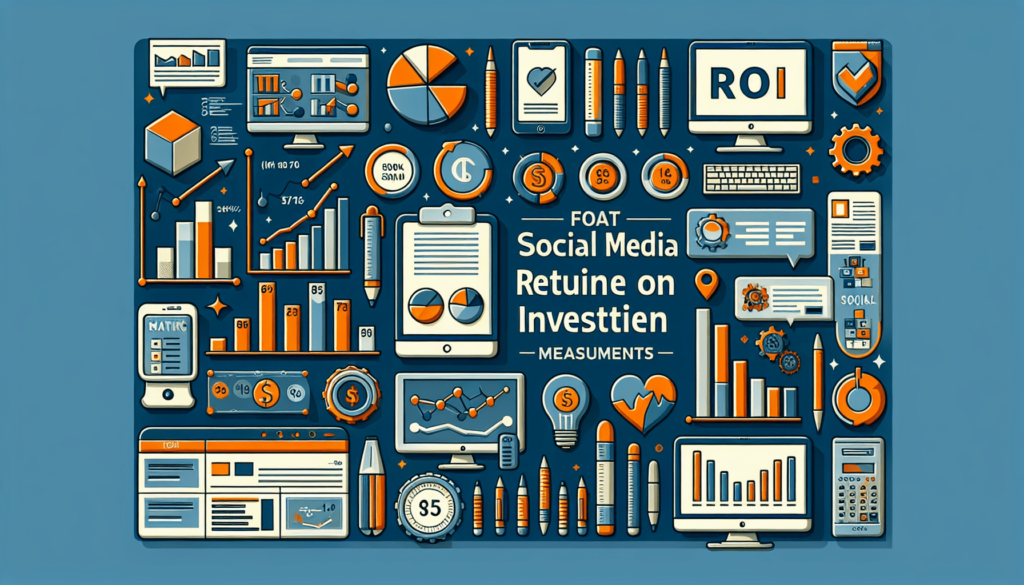What Are The Best Ways To Measure ROI On Social Media Efforts?
Welcome to an article that will provide you with valuable insights on the best ways to measure ROI on your social media efforts. In today’s digital age, it’s crucial for businesses to track and analyze the effectiveness of their social media marketing strategies. By implementing the right measurement tools and techniques, you can gain a deeper understanding of how your social media efforts are performing and make data-driven decisions to optimize your ROI. So let’s dive in and explore the various methods you can use to measure the impact of your social media campaigns! What Are The Best Ways To Measure ROI On Social Media Efforts?
Introduction
So you’ve been working hard on your social media strategy, but how do you know if your efforts are paying off? Tracking return on investment (ROI) for social media can be a bit tricky, but with the right tools and metrics, you can gain valuable insights into the effectiveness of your campaigns. In this article, we will explore some of the best ways to measure ROI on social media efforts.
Start with Clear Goals
Before you can measure the success of your social media efforts, you need to establish clear goals. What are you looking to achieve with your social media presence? Are you aiming to increase brand awareness, drive website traffic, generate leads, or boost sales? By setting specific goals, you can tailor your strategy to achieve the desired outcomes and measure your progress more effectively.
Analyze Key Performance Indicators (KPIs)
Once you have defined your goals, it’s essential to identify the key performance indicators (KPIs) that will help you track progress towards those goals. KPIs are specific metrics that indicate how well your social media efforts are performing. Some common KPIs to consider include:
- Engagement rate: The total number of likes, comments, shares, and clicks divided by the total number of followers.
- Reach: The number of unique users who have seen your social media posts.
- Click-through rate (CTR): The percentage of people who clicked on a link in your post.
- Conversion rate: The percentage of people who completed a desired action, such as making a purchase or signing up for a newsletter.
By regularly monitoring these KPIs, you can gain valuable insights into the effectiveness of your social media campaigns and make data-driven decisions to optimize your strategy.

Utilize Social Media Analytics Tools
To measure ROI on social media efforts effectively, you need to leverage the power of social media analytics tools. These tools provide valuable data and insights that can help you track the performance of your campaigns, understand your audience, and make informed decisions to improve your results. Some popular social media analytics tools include:
| Tool | Features | Pricing |
|---|---|---|
| Google Analytics | Website traffic analysis, audience demographics | Free |
| Sprout Social | Social media scheduling, engagement tracking | Plans start at $99/month |
| Hootsuite | Social media management, reporting tools | Plans start at $19/month |
By using these tools, you can track important metrics, analyze trends, and measure the impact of your social media efforts on your bottom line.
Detailed Analytics Reports
Many social media analytics tools offer detailed reports that provide insights into your social media performance. These reports can help you track key metrics, such as engagement rates, reach, and conversions, over time, and identify areas for improvement. By analyzing these reports regularly, you can gain a better understanding of what is working well and what needs to be adjusted in your social media strategy.
Social Listening
In addition to tracking your social media metrics, it is essential to listen to what your audience is saying about your brand on social media. Social listening involves monitoring conversations, mentions, and feedback related to your brand and industry across different social media platforms. By listening to your audience, you can gain valuable insights into their preferences, sentiments, and pain points, and adjust your strategy accordingly to better meet their needs.

Calculate Social Media ROI
Measuring ROI on social media efforts involves calculating the return on investment of your campaigns based on the costs incurred and the outcomes achieved. To calculate social media ROI, you can use the following formula:
Social Media ROI = (Revenue from Social Media – Cost of Social Media Marketing) / Cost of Social Media Marketing x 100
In this formula, “Revenue from Social Media” refers to the total revenue generated from your social media campaigns, while the “Cost of Social Media Marketing” includes expenses such as ad spend, content creation, and social media management tools.
Revenue Tracking
To calculate the revenue generated from your social media efforts accurately, you need to track the performance of your campaigns and attribute sales to specific social media channels or campaigns. You can use UTM parameters, tracking pixels, and social media analytics tools to monitor conversions and assign revenue to your social media efforts effectively.
Cost Analysis
In addition to tracking revenue, it’s crucial to analyze the costs associated with your social media marketing activities. Make sure to factor in expenses such as ad spend, content creation, social media management tools, and staff time to get an accurate picture of your total investment in social media.
Adjust ROI Metrics
Depending on your goals and objectives, the way you calculate ROI on social media efforts may vary. For example, if your primary goal is brand awareness, you may focus on metrics like reach, engagement, and sentiment, rather than direct revenue generation. By adjusting your ROI metrics to align with your goals, you can measure the success of your social media campaigns more effectively.

A/B Testing and Optimization
To improve the ROI of your social media efforts, consider implementing A/B testing and optimization strategies to test different elements of your campaigns and identify the most effective tactics. A/B testing involves creating two versions of a social media post or ad with one key difference and measuring the performance of each version to determine which one yields better results. Some elements you can test include:
- Ad copy
- Creative elements (images, videos)
- Call-to-action buttons
- Target audience segments
By running A/B tests and optimizing your social media campaigns based on the results, you can improve engagement, click-through rates, and conversions, ultimately increasing the ROI of your efforts.
Testing Tools
To conduct A/B testing on social media effectively, you can use various testing tools and platforms that allow you to create and analyze different versions of your posts and ads. Some popular A/B testing tools for social media include:
| Tool | Features | Pricing |
|---|---|---|
| Facebook Ads Manager | Split testing, campaign optimization | Free with Facebook ads |
| Google Optimize | Website A/B testing, content personalization | Free |
| Unbounce | Landing page optimization, conversion tracking | Plans start at $80/month |
By using these tools, you can test different elements of your social media campaigns, gather data-driven insights, and optimize your strategy for better results.

Case Studies and Success Stories
One of the best ways to understand the impact of social media ROI is by looking at real-life case studies and success stories from businesses that have achieved significant results through their social media efforts. Here are a few examples of companies that have effectively measured and improved their ROI on social media:
Case Study: Company A
Company A, a fashion retailer, launched a social media campaign to promote their new collection and drive sales. By leveraging influencer partnerships, eye-catching visuals, and targeted ads, they were able to increase website traffic, engagement, and conversions significantly. Through meticulous tracking and analysis of their social media metrics, Company A was able to calculate an impressive ROI of 300% on their campaign investment.
Case Study: Company B
Company B, a software company, aimed to increase product awareness and generate leads through social media marketing. By creating informative blog posts, hosting webinars, and running targeted ads across social platforms, they were able to reach a wider audience and drive high-quality leads to their website. By meticulously tracking their social media metrics and attributing sales to specific campaigns, Company B achieved an ROI of 400% on their social media efforts.
Success Story: Company C
Company C, a food delivery service, struggled to measure the impact of their social media campaigns on customer acquisition and retention. By implementing advanced analytics tools, conducting regular A/B testing, and listening to customer feedback on social platforms, they were able to optimize their campaigns and improve their ROI significantly. Company C saw a 200% increase in customer acquisition and a 150% increase in customer retention, attributing these gains to their data-driven social media strategy.
By studying these case studies and success stories, you can gain valuable insights into the strategies and tactics that can help you measure and improve the ROI of your social media efforts.

Conclusion
Measuring ROI on social media efforts is essential for evaluating the effectiveness of your campaigns, optimizing your strategy, and achieving your business goals. By setting clear goals, tracking key performance indicators, utilizing social media analytics tools, calculating social media ROI, conducting A/B testing, and studying case studies, you can gain valuable insights into the impact of your social media efforts and make data-driven decisions to improve your results. Remember, measuring social media ROI is an ongoing process that requires continuous monitoring, analysis, and optimization to ensure the success of your campaigns. By implementing these best practices and strategies, you can measure ROI on social media effectively and maximize the return on your investment.






